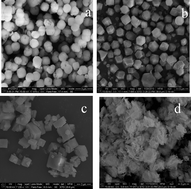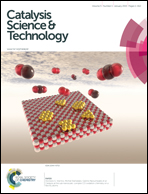Decarboxylation of oleic acid over Pt catalysts supported on small-pore zeolites and hydrotalcite
Abstract
The catalytic decarboxylation and further conversions of oleic acid to paraffins, branched and aromatic hydrocarbons over Pt supported on small pore zeolites and hydrotalcite are demonstrated. The influence of the support, platinum source, and reaction temperature on the decarboxylation of oleic acid was investigated. An increase in reaction temperature increased the degree of decarboxylation and selectivity to heptadecane. Pt-SAPO-34 was a very effective catalyst. In addition to a high degree of decarboxylation, Pt-SAPO-34 displayed a high selectivity to heptadecane and dodecylbenzene among the products. Branched isomers, cracked (mostly <C17) paraffins, alkenes such as undecene and dodecene, and carboxylic acids such as nonanoic acid and decanoic acid were observed as side products. The further isomerization of the initially formed linear heptadecane (by decarboxylation of oleic acid) to branched isomers is suppressed in the narrow pores of SAPO-34 due to restricted transition state shape selectivity limitations in the pore system of SAPO-34. Catalyst acidity, dispersion of Pt and the pore diameter of the support played crucial roles in determining product selectivity.


 Please wait while we load your content...
Please wait while we load your content...